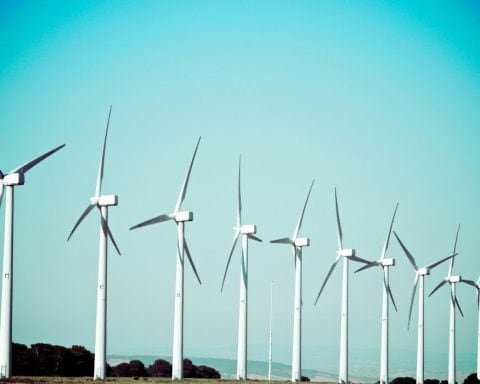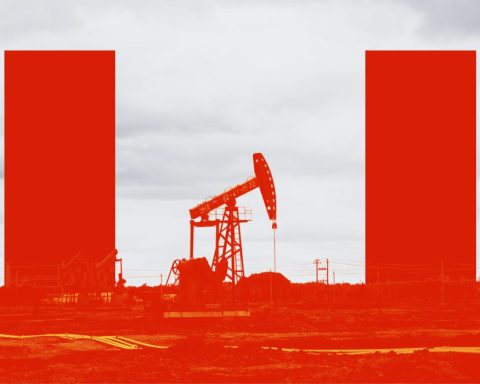At last, the race is on. Hydrogen technology has long been considered a key part of the global energy system of the future, but that future suddenly isn’t that far away. If anything, the announcement of innovations like the Hyperion XP-1, a new hydrogen-powered supercar with a top speed of 221 eye-watering miles per hour, suggests that hydrogen’s moment may well be at hand. As Hyperion CEO Angelo Kafantaris told Car and Driver in August, “We’re an energy company that’s building this car to tell a story.”
That story goes far beyond the realm of turbo-powered supercars. California’s recent decision to ban the sale of all diesel trucks and vans by 2045 laid down the latest marker about the diminished role that fossil fuels are going to play in the future. And while hydrogen will be competing with electric vehicles for that market share, it’s clear that hydrogen is ready to take on a much bigger role than it has in the past as it expands into energy storage, heavy industry and transportation.
“I think we’re just in the first few months of a fundamental retooling of energy systems that could very well dominate for generations to come,” says Dan Wicklum, CEO of The Transition Accelerator, a pan-Canadian non-profit dedicated to maximizing Canadian opportunities in the ongoing energy transition.
By most accounts, Germany has taken an early lead in the race to dominate this new market. Its recently announced National Hydrogen Council will oversee a plan that includes €9 billion worth of investment in both research and companies that can help it meet its goal of five gigawatts (GW) of hydrogen capacity (the equivalent of five nuclear power stations) by 2030 and 10 GW by 2040. “The time has come for hydrogen and the technologies enabling its use,” said Peter Altmaier, Germany’s minister for economic affairs and energy, in July. “We must therefore harness the potential for economic output, employment, and the climate, and do this now.”
Germany isn’t alone in its belief that hydrogen needs to play a much bigger role in the economy of the near future. Last week, France rolled out €7 billion for the development of a hydrogen industry and other green technologies as part of its €100 billion green recovery package, aiming for 6.5 GW of installed capacity by 2030.
Europe’s broader hydrogen strategy calls specifically for 40 GW of green hydrogen-production capacity – that is, hydrogen produced from renewable energy like wind and solar – to be installed by 2030, with an additional 40 GW “in Europe’s neighbourhood with export to the EU.” That isn’t going to be easy. Next year, Spain’s Iberdrola is expected to finish building Europe’s largest dedicated green hydrogen-production facility, one whose hydrogen fuel will be used to help make fertilizers. But as Sebastian Kennedy noted in the Energy Flux newsletter, “To achieve only the within-EU 2030 target [for hydrogen development], Europe would need to build around 200 such facilities every year for the next decade.”
That’s where Canada can play an important role. Europe will try to get some of that hydrogen from North Africa, but the mismatch between the desired supply and the available capacity of hydrogen – and Europe’s obvious need to avoid depending too heavily on Russian imports – creates a perfect opening to build a new export-driven energy economy here. Wicklum says that opening is a function of the cost advantage Canada has in creating both blue hydrogen – that is, hydrogen derived from natural gas that, unlike so-called grey hydrogen, uses carbon capture technology to sequester emissions – and green hydrogen, which is the product of combining renewable energy with inputs like water and biomass.
And while Europe has indicated that it wants to rely entirely on the latter, it may need both blue and green hydrogen to meet its targets. The natural gas sector is hopeful. As James Watson, the secretary general of Eurogas, told Greentech Media, “They know that they won’t get to carbon-neutrality without it. It’s just I think that it’s difficult for them to openly say that.” That would be good news for Canada, which can provide both at very competitive costs. “Independent analysis has shown that Canada is about the cheapest producer of both green and blue hydrogen on the planet,” Wicklum says.
Maggie Hanna, the president of Common Ground Energy and a fellow with Alberta’s Energy Futures Lab, says that while hydrogen is currently being sold for as much as $30 per kilogram, it will soon settle at so-called diesel parity, or around $4 to $5 per kilogram. That bodes well for Alberta, which can produce blue hydrogen at much lower prices. “In Alberta, we can make hydrogen for $1.35 a kilogram, with sequestration, which will go to less than a buck when we have the proper carbon pricing regime in place,” Hanna says. That would require a $50 per tonne carbon price which isn’t much of a stretch from its current level of $30 per tonne. And while green hydrogen would cost more in Alberta, the province has plenty of wind and solar potential that could be tapped to make it.
Quebec’s enormous stores of hydroelectric capacity, combined with its proximity to global export markets, makes it a perfect place to produce green hydrogen – and that’s exactly what’s happening. In January, Quebec’s H2V Energies announced that it was opening its order book on a new plant that can turn residual residential biomass materials (such as waste wood and paper) into green hydrogen, one with an annual capacity of approximately 49,000 tonnes. And at an expected cost of $3.50 per kilogram (or US$2.68/€2.41), the company says that its hydrogen will be “less expensive than diesel fuel and defying all competition.”
Unlike proposed oil pipelines to the east and west coasts that have divided Canadians and sparked conflict and protest, a hydrogen pipeline could be a unifying force. “If you’re repurposing infrastructure to move a fuel that is not just compatible with, but required and necessary to have a net-zero future, then I think there’s the potential for common ground between these groups and regions,” Wicklum says.
So what will it take for Canada to seize this opportunity to reduce emissions, diversify its energy exports and unify an increasingly fractured country? The fact that Natural Resources Canada is in the process of designing a national hydrogen strategy is an important – and necessary – first step. But advocates like Hanna say we also need to align our regulations and standards with Europe – pronto. “In the same way that oil is traded around the world using the US dollar as its currency, hydrogen’s going to be traded on the euro because they were the first movers.”
The recently signed Comprehensive Economic and Trade Agreement between Europe and Canada will help with that integration process. But Canada still has important work to do if it wants to meet Europe’s growing appetite for zero-carbon energy. Getting there will require the kind of government support that is increasingly common in other emerging hydrogen economies such as Germany and France. For example, of the €9 billion Germany is allocating to green hydrogen development, €2 billion will be dedicated to creating partnerships with countries where green hydrogen can be efficiently produced.
Canada’s federal government seems inclined to make some aggressive bets right now. With Prime Minister Justin Trudeau promising that September’s throne speech will lay out an “ambitious green agenda,” it’s safe to assume that some of those bets will be made in the area of clean technology and energy. Natural Resources Minister Seamus O’Regan told the CBC, "Things are happening quickly...trends we saw before the pandemic have accelerated. We want to be ahead of it." The Canadian Hydrogen and Fuel Cell Association has said it hopes to see the feds earmark $3 billion for hydrogen. The Corporate Knights Building Back Better report recommended that the feds create a multiyear $40.5 billion natural resources and EV fund, with $5 billion set aside to close research gaps, and crowd in an additional $105 billion in private sector investment.
But if that money doesn’t materialize, Canada may miss out on far more of it being generated down the road. “This is a competitiveness play over decades, where we need to be able to position ourselves to win economically and environmentally,” Wicklum says. “If we don’t, we just won’t be relevant.”
Max Fawcett is a freelance writer and the former editor of Alberta Oil magazine.
With the support of the Embassy of the Federal Republic of Germany in Canada.





